
- Remember me Not recommended on shared computers
Forgot your password?
Or sign in with one of these services
- Instruction and Playing Tips

Club Path/Face to Path Optimal or Acceptable Ranges
By Eli17 , September 24, 2023 in Instruction and Playing Tips
Recommended Posts
Just recently I gained access to a Trackman (Golf isn't a very popular sport where I am from) and got a bunch of new info about my swing, however I am unsure about one particular value - an optimal/acceptable range for Club path and face to path.
I understand the ball flight laws but am actually interested what would represent a functional working range in actual degrees. I watched a bunch of youtube, searched the forums and didn't find any actual number except for one post mentioning a generally functional swing path should be in the +/- 3-6 degrees with the face to path being the opposite and halved both for fade and draw. e.g. if you have a +5 path you would want the ftp to be -2,5ish as a general rule.
Can anyone help me figure out what I should be aiming for? Where can I get some info on this.
my swing speed with 7 iron is 77-78 mph and my path is from in to out on average 5-6 degrees and face to path is -3 to-4. So its a draw biased swing but I was honestly surprised that if was so in to out. On swings where I got stuck it was even 8-10 degrees in to out.
Would appreciate any help.
Link to comment
Share on other sites.
Register for free today and you won't see this ad spot again!

I'm not really sure what you are asking for, people play different amounts of curve and the face to path versus path angle differences are just going to create different amounts of curve. Some people prefer more, some people prefer less. As long as you have a consistent ball flight I wouldn't worry too much about it

I think generally speaking, good shots are within 2° FTP. You’re not that far off in terms of the face but that path needs addressing. Your miss with a 7i that’s 8-10° out is way too much.
1 minute ago, colin007 said: I'm not really sure what you are asking for, people play different amounts of curve and the face to path versus path angle differences are just going to create different amounts of curve. Some people prefer more, some people prefer less. As long as you have a consistent ball flight I wouldn't worry too much about it
There gets to be a point where big curves aren’t playable. Like if you have a tree-lined hole where you have to start your ball right to sweep it around but you can’t because the trees are there.
“By three methods we may learn wisdom: First, by reflection, which is noblest; Second, by imitation, which is easiest; and third by experience, which is the bitterest.” - Confucius
My Swing Thread
1 hour ago, billchao said: I think generally speaking, good shots are within 2° FTP. You’re not that far off in terms of the face but that path needs addressing. Your miss with a 7i that’s 8-10° out is way too much. There gets to be a point where big curves aren’t playable. Like if you have a tree-lined hole where you have to start your ball right to sweep it around but you can’t because the trees are there.
Thanks for the input! Is there some type of table or spreadsheet that would provide information or approximate values on what would to expect under the specific path and ftp values?
Would aiming for a 3 degree in to out path with a slightly closed face make sense?
1 hour ago, colin007 said: I'm not really sure what you are asking for, people play different amounts of curve and the face to path versus path angle differences are just going to create different amounts of curve. Some people prefer more, some people prefer less. As long as you have a consistent ball flight I wouldn't worry too much about it
I am looking for a table or formula for what types of flight I can expect under specific circumstances. Namely if my swing speed is approx 80 mph, path is +3 and ftp is -2, what will the outcome be?
The big picture I would say is that I am having trouble digesting the info I got and do not know what an acceptable and functional range regarding path would be, so I am looking for an anchor value to start and set a goal.
17 minutes ago, Eli17 said: Is there some type of table or spreadsheet that would provide information or approximate values on what would to expect under the specific path and ftp values?
I don’t think it is as simple as just the two variables. Dynamic loft plays a part, too. Anyway the data isn’t available to the general public. I’m sure Trackman has it.
18 minutes ago, Eli17 said: Would aiming for a 3 degree in to out path with a slightly closed face make sense?
I’d be careful about chasing specific numbers as a goal. If you’re hitting big curves and hooks, work on that. The numbers will sort themselves out.
20 minutes ago, Eli17 said: The big picture I would say is that I am having trouble digesting the info I got and do not know what an acceptable and functional range regarding path would be, so I am looking for an anchor value to start and set a goal.
Golf isn’t played from a spreadsheet, my friend 😃
I know plenty of golfers who don’t know their swing numbers like I know mine who could give me five strokes a side and still beat me.

3 hours ago, Eli17 said: Th e big picture I would say is that I am having trouble digesting the info I got and do not know what an acceptable and functional range regarding path would be, so I am looking for an anchor value to start and set a goal.
I think the goal is to have your ball curve back towards the intended landing line. Is your ball doing that?
- Sep 25 iacas changed the title to Club Path/Face to Path Optimal or Acceptable Ranges
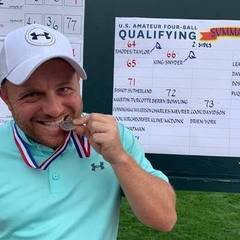
trackman university has a lot of information about this and other parts in regards to numbers. def go through it and it will help you with the numbers
- Popular Post
You really need to know the numbers if you want to go down that path...
You can have a perfect path of +3 degrees and the face aiming +1.5 degrees from the target (fadeToPath of -1.5) for each club in the bag and you will still see totally different ball fligth with each of them. Why?
Going for the extreme examples... You are probably hitting down on your wedges by 6°. By the D-Plane laws (an extension of the ball flight rules) you are moving your path to the right by 3° so now your dynamic path is in reality +6° but the face is still only +1.5° (dynamic faceToPath is now -4.5°). As you know the ball is going to launch at around +2° to the target and turn left to miss it to the left (overdraw). (wedges curve less than less lofted clubs but enough to make you miss left if you don't consider the effect of AoA in the dynamic path.
So basically every club you hit down on it you are going to miss it in average to the left of the target, just because the dynamic path is more right than you intended. If you manage to hit your woods with 0° AoA then you are going to hit your target as you wanted. But if you hit Up with the driver, lets say +4°, you are moving your dynamic path to the left by 2 degrees. So now your dynamic path is +1° to target and your face is still +1.5° degrees from target (face to path is now +0.5). This is going to be a ball launching +1° of target and moving rigth. (basically a Fade). So with wedges and every club you hit down on it, you are going to hit an overdraw (you need to aim more to the rigth), with 0° AoA you are going to play a perfect draw (you need to aim to the target), and hitting up on it you are going to see a Fade moving away from target (you need to aim left of the target).
Conclusion A: there is no perfect number. There are a lot of variables that affect ball flight that changes with every club you pick up. consider that toe and heel shots also affect ball flight.
Conclusion B: Having a faceToPath that is 1 or 2 degrees apart is going to make you hit fade and draws depending on your AoA. To hit the ball with the same shape for every club you need to have more degrees between the face and the path than half of the AoA you are hitting each shot. If you hit down on wedges at -6° and up on the driver at +6° then you need to at least have 4 degrees between your face and your path in either direction.

4 hours ago, p1n9183 said: You really need to know the numbers if you want to go down that path... You can have a perfect path of +3 degrees and the face aiming +1.5 degrees from the target (fadeToPath of -1.5) for each club in the bag and you will still see totally different ball fligth with each of them. Why? Going for the extreme examples... You are probably hitting down on your wedges by 6°. By the D-Plane laws (an extension of the ball flight rules) you are moving your path to the right by 3° so now your dynamic path is in reality +6° but the face is still only +1.5° (dynamic faceToPath is now -4.5°). As you know the ball is going to launch at around +2° to the target and turn left to miss it to the left (overdraw). (wedges curve less than less lofted clubs but enough to make you miss left if you don't consider the effect of AoA in the dynamic path. So basically every club you hit down on it you are going to miss it in average to the left of the target, just because the dynamic path is more right than you intended. If you manage to hit your woods with 0° AoA then you are going to hit your target as you wanted. But if you hit Up with the driver, lets say +4°, you are moving your dynamic path to the left by 2 degrees. So now your dynamic path is +1° to target and your face is still +1.5° degrees from target (face to path is now +0.5). This is going to be a ball launching +1° of target and moving rigth. (basically a Fade). So with wedges and every club you hit down on it, you are going to hit an overdraw (you need to aim more to the rigth), with 0° AoA you are going to play a perfect draw (you need to aim to the target), and hitting up on it you are going to see a Fade moving away from target (you need to aim left of the target). Conclusion A: there is no perfect number. There are a lot of variables that affect ball flight that changes with every club you pick up. consider that toe and heel shots also affect ball flight. Conclusion B: Having a faceToPath that is 1 or 2 degrees apart is going to make you hit fade and draws depending on your AoA. To hit the ball with the same shape for every club you need to have more degrees between the face and the path than half of the AoA you are hitting each shot. If you hit down on wedges at -6° and up on the driver at +6° then you need to at least have 4 degrees between your face and your path in either direction.
11 hours ago, p1n9183 said: You really need to know the numbers if you want to go down that path... You can have a perfect path of +3 degrees and the face aiming +1.5 degrees from the target (fadeToPath of -1.5) for each club in the bag and you will still see totally different ball fligth with each of them. Why? Going for the extreme examples... You are probably hitting down on your wedges by 6°. By the D-Plane laws (an extension of the ball flight rules) you are moving your path to the right by 3° so now your dynamic path is in reality +6° but the face is still only +1.5° (dynamic faceToPath is now -4.5°). As you know the ball is going to launch at around +2° to the target and turn left to miss it to the left (overdraw). (wedges curve less than less lofted clubs but enough to make you miss left if you don't consider the effect of AoA in the dynamic path. So basically every club you hit down on it you are going to miss it in average to the left of the target, just because the dynamic path is more right than you intended. If you manage to hit your woods with 0° AoA then you are going to hit your target as you wanted. But if you hit Up with the driver, lets say +4°, you are moving your dynamic path to the left by 2 degrees. So now your dynamic path is +1° to target and your face is still +1.5° degrees from target (face to path is now +0.5). This is going to be a ball launching +1° of target and moving rigth. (basically a Fade). So with wedges and every club you hit down on it, you are going to hit an overdraw (you need to aim more to the rigth), with 0° AoA you are going to play a perfect draw (you need to aim to the target), and hitting up on it you are going to see a Fade moving away from target (you need to aim left of the target). Conclusion A: there is no perfect number. There are a lot of variables that affect ball flight that changes with every club you pick up. consider that toe and heel shots also affect ball flight. Conclusion B: Having a faceToPath that is 1 or 2 degrees apart is going to make you hit fade and draws depending on your AoA. To hit the ball with the same shape for every club you need to have more degrees between the face and the path than half of the AoA you are hitting each shot. If you hit down on wedges at -6° and up on the driver at +6° then you need to at least have 4 degrees between your face and your path in either direction.
This is an amazing amount of information and knowledge and I am grateful for the explanations (using actual numbers which a lot of people don't do) and time used to answer. Where could I get further information like this and further examine it?
On 9/24/2023 at 10:46 PM, colin007 said: I think the goal is to have your ball curve back towards the intended landing line. Is your ball doing that?
Yes, I have a draw biased swing, my miss is a straight push most often. However this is an attempt to get the flight under control and be able to predict what amount of curve I want. So my goal is not to work the extremes and sling hooks around the course but rather getting an idea as to what would be a functional range for the ball flight.
9 hours ago, Eli17 said: Where could I get further information like this and further examine it?
This page was really useful when I found it.
https://www.perfectgolfswingreview.net/ballflight.htm
On 9/26/2023 at 4:38 PM, p1n9183 said: As you know the ball is going to launch at around +2° to the target
How dare you assume that I know that.....

On 9/27/2023 at 4:09 AM, Eli17 said: This is an amazing amount of information and knowledge and I am grateful for the explanations (using actual numbers which a lot of people don't do) and time used to answer. Where could I get further information like this and further examine it?
@grubby98 already answered this, Trackman University. It's free.
Trackmanuniversity . com
On 9/27/2023 at 4:09 AM, Eli17 said: Yes, I have a draw biased swing, my miss is a straight push most often. However this is an attempt to get the flight under control and be able to predict what amount of curve I want . So my goal is not to work the extremes and sling hooks around the course but rather getting an idea as to what would be a functional range for the ball flight.
You answered this in your original post, somewhere where the face is roughly half of the path will have the ball curving. The more severe your path is and the further the face is from that path the bigger the curve will be. IMO that is all you really need to know in order to predict what amount of curve you want and a functional range for the ball flight. And then just be aware of gear affect especially with longer clubs and the affect that can have on ball flight too.
I think launch monitor numbers can be useful but it's important to not get bogged down in the weeds with the data. I own a launch monitor that gives me club data too, but I've never once been on the course and thought to myself "My stock swing is 2 degrees out to in but I want to cut this ball more around a tree, I need to make my path 7 out to in here because that gives me 30yds of curve but 6 degrees out to in only gives me 25yds of curve."
A functional range for the ball flight is going to be one that has a repeatable start line and a repeatable curve. You can make that happen with a 1 degree in to out path, a 5 degree in to out path, or even an 8 degree in to out path depending on where you deliver the face. For a period of time earlier this year I was hitting functional shots that were hitting my target and my swing path was double digits out to in.
- Administrator

43 minutes ago, klineka said: You answered this in your original post, somewhere where the face is roughly half of the path will have the ball curving.
It's a 1:2 ratio for a 6I, yes. For a 9I/W it's about 1:5 or 1:6 for a ball to curve back to the target. For a driver it's closer to 2:3 or even 3:4.

Check Out: New Topics | TST Blog | Golf Terms | Instructional Content | Analyzr | LSW | Instructional Droplets
Create an account or sign in to comment
You need to be a member in order to leave a comment
Create an account
Sign up for a new account in our community. It's easy!
Already have an account? Sign in here.
Topics Being Discussed Right Now on The Sand Trap
"5 minutes daily" practice challenge 1 2 3 4 859.
By iacas , December 31, 2017 in Instruction and Playing Tips
- 5 minutes daily
Tagged with:
- improvement
- five minutes
- 15,448 replies
- 947,223 views
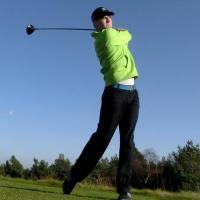
- 47 minutes ago
2024 Changes to the World Handicap System (WHS) 1 2 3
By DaveP043 , November 1, 2023 in Golf Talk
- 7,315 views
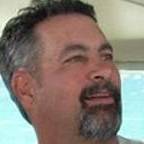
- 57 minutes ago
National Course Rating Database Not Working for Me?
By dennyjones , 21 hours ago in Golf Courses and Architecture
- 2 hours ago
Wordle Daily Puzzle 1 2 3 4 391
By iacas , January 6, 2022 in The Grill Room
- 7,034 replies
- 285,574 views

Golf Tips for Hitting Longer Driver (Tips for Both Men and Women)
By Wilkerson Allen , 10 hours ago in Golf Talk
- hitting longer driver
- golf driving tips
- driving distance
- golf driver technique
- 3 hours ago
Want to join this community?
We'd love to have you!
TST Partners
Popular Now
By DaveP043 Started November 1, 2023
By Zeph · 47 minutes ago
By DaveP043 · 57 minutes ago

By saevel25 · 1 hour ago
By gbogey · 1 hour ago
By DaveP043 · 1 hour ago
- Existing user? Sign In
- Online Users
- Support TST
- Instructional Content
- On Modern Instruction
- Leaderboard
- Member Reviews
- New Content
My Activity Streams
- All Content (Read/Unread)
- Content I Started
- All Activity
- Instruction
- Member Swings
- Swing Thoughts
- Destinations
- Reading Room
- Fitness/Exercise
- Marketplace
- Disc Golf, Foot Golf, etc.
- The Grill Room
- Announcements/Tech Support
- Private Forums
- Hittin' the Links
- Thrash Talk
- The Numbers Game
Newport Cup
- Newport Cup Home
- Add an Avatar
- Add a Signature
- @Mention Members
- Link to Posts
- Quote Posts
- Embed Videos
- Embed Images
- Create a Poll
- Get an Award
- Advertise with TST…
- Subscriptions
- Manage Purchases
- Personal Information
- Alternative Contacts
- Community Map
- Create New...
Important Information
Welcome to TST! Signing up is free , and you'll see fewer ads and can talk with fellow golf enthusiasts! By using TST, you agree to our Terms of Use , our Privacy Policy , and our Guidelines .

PGA Tour Trackman Numbers: Unveiling The Stats
PGA Tour players are no strangers to cutting-edge technology, and one tool that has revolutionized the game is Trackman. Trackman is a state-of-the-art radar-based system that provides invaluable data and insights into a player’s performance. By accurately tracking the trajectory and characteristics of every shot, Trackman generates a wealth of numbers that offer key insights into a player’s abilities and areas for improvement. In this article, we will explore the role of Trackman in the PGA Tour and delve into the significance of various Trackman numbers that shape the outcome of professional golf.
The Role of Trackman in PGA Tour
Trackman has become an indispensable tool for PGA Tour players, giving them a competitive edge and a deeper understanding of their game. Professionals across the tour utilize Trackman in various ways, from swing analysis and equipment optimization to practicing specific shots and developing strategies for specific courses.
One of the biggest advantages of using Trackman is its ability to provide accurate and objective data, allowing players to make data-driven decisions. By analyzing Trackman numbers, players can assess their performance and uncover areas for improvement. This invaluable feedback helps players refine their swing mechanics, optimize their club selection, and fine-tune their shot strategies for different playing conditions.
Key Trackman Numbers in PGA Tour
When it comes to Trackman numbers, there are several key metrics that play a vital role in understanding a player’s performance. These numbers provide insights into a player’s power, accuracy, and overall effectiveness on the golf course. Let’s take a closer look at some of these important Trackman numbers:
1. Carry Distance
Carry distance refers to the distance the ball travels through the air before it lands. In PGA Tour, carry distance is a crucial indicator of a player’s power and clubhead speed. It helps determine the effectiveness of a player’s swing and the distance they can achieve with their shots.
2. Total Distance
Total distance encompasses both the carry distance and the roll after landing. This number is significant in the game as it provides a comprehensive measure of a player’s overall distance coverage. The ability to hit the ball a long way can give players a competitive advantage, especially on longer and more challenging courses.
3. Ball Speed
Ball speed is a critical factor in determining the distance a player can achieve with their shots. A higher ball speed translates to greater shot distance. PGA Tour players strive to maximize their ball speed through efficient swing mechanics and optimal equipment selection.
4. Smash Factor
Smash factor measures the efficiency of a player’s impact by indicating how well they transfer energy from the clubhead to the ball. A higher smash factor indicates a more efficient transfer of energy, resulting in greater ball speed and distance.
5. Launch Angle
The launch angle refers to the vertical angle at which the ball takes off after impact. PGA Tour players use Trackman to optimize their launch angle to ensure the right trajectory based on the shot requirements. Finding the ideal launch angle can maximize carry distance and optimize overall shot performance.
6. Spin Rate
Spin rate is the rate at which the ball spins around its axis after being struck. Controlling the spin rate is crucial for shot accuracy, especially when hitting approach shots into the green. By analyzing spin rate, players can fine-tune their shots and control the ball’s flight path.
7. Angle of Attack
The angle of attack refers to the angle at which the clubhead approaches the ball during impact. This metric affects the ball’s flight and shot shape. PGA Tour players analyze their angle of attack using Trackman to optimize their shots and achieve the desired shot shape for various playing conditions.
8. Club Path
The club path refers to the direction the clubhead moves during the swing. Understanding the club path is crucial for shot accuracy and controlling the shape of the ball’s flight. Analyzing the club path helps players identify any swing faults and make necessary adjustments.
How Trackman Numbers are Analyzed by Coaches
Trackman numbers not only provide players with valuable insights but also contribute to the work of coaches and trainers. Coaches play a vital role in interpreting and analyzing Trackman data to identify areas of improvement and develop customized training programs for their players. By analyzing the Trackman numbers, coaches can uncover patterns, strengths, and weaknesses in a player’s game, allowing them to tailor their coaching approach to address specific areas that require attention.
Utilizing Trackman data, coaches can track a player’s progress over time, set realistic goals, and measure improvements accurately. With this feedback-driven approach, coaches can optimize their training programs and help PGA Tour players reach their full potential.
Practical Applications of Trackman Numbers for PGA Tour Players
PGA Tour players harness the power of Trackman numbers to fine-tune various aspects of their game, ultimately improving their performance on the course. Here are some practical applications of Trackman numbers for PGA Tour players:
– Enhancing driving distance and accuracy through data-driven adjustments
– Optimizing approach shots for improved proximity to the hole
– Fine-tuning short game skills using Trackman data for better scoring opportunities
– Tracking progress and evaluating performance improvements over time
Challenges and Limitations of Trackman Numbers
While Trackman is an incredible tool, there are some challenges and limitations associated with its use in the PGA Tour:
– Factors such as adverse weather conditions or uneven terrains can impact the accuracy of Trackman measurements.
– Interpreting Trackman data in varying weather conditions and course setups can pose challenges for players and coaches.
– It’s important to note that Trackman data represents a snapshot of a player’s performance and may not capture the entire picture of their abilities.
Trackman numbers have become an essential part of the PGA Tour, providing valuable insights into a player’s performance and helping them make data-driven decisions. From carry distance to spin rate, each Trackman number offers a unique perspective on a player’s game. Coaches and players alike rely on these numbers to develop strategies, identify areas for improvement, and ultimately enhance their performance on the course. As golf continues to embrace technology, Trackman’s role in shaping the future of the sport and player development will undoubtedly continue to grow.

Robert Akin

- Group Events
- Club Fitting
- Summer Junior Classes
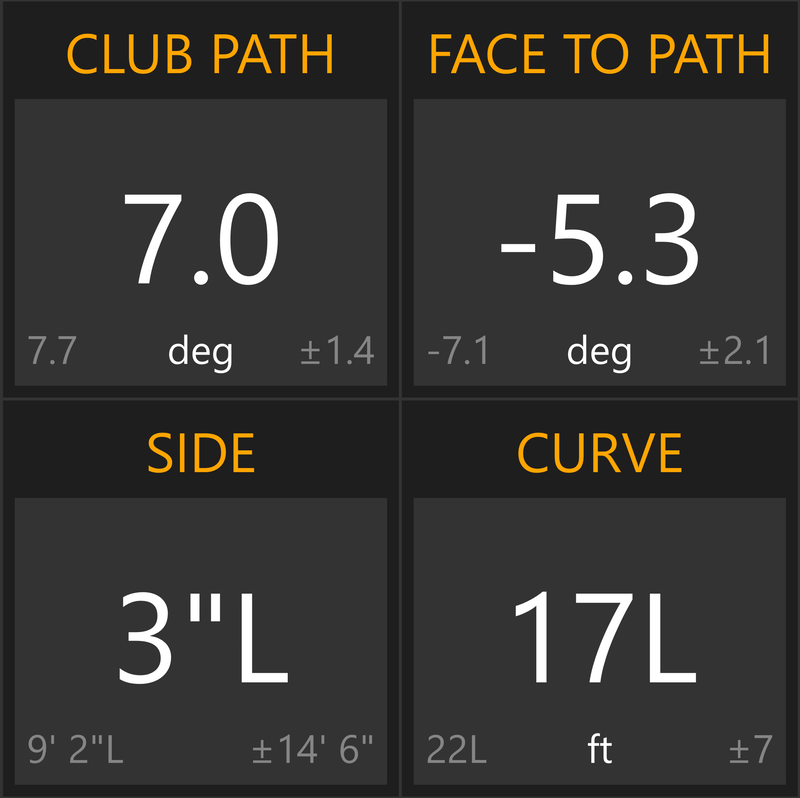
Launch conditions
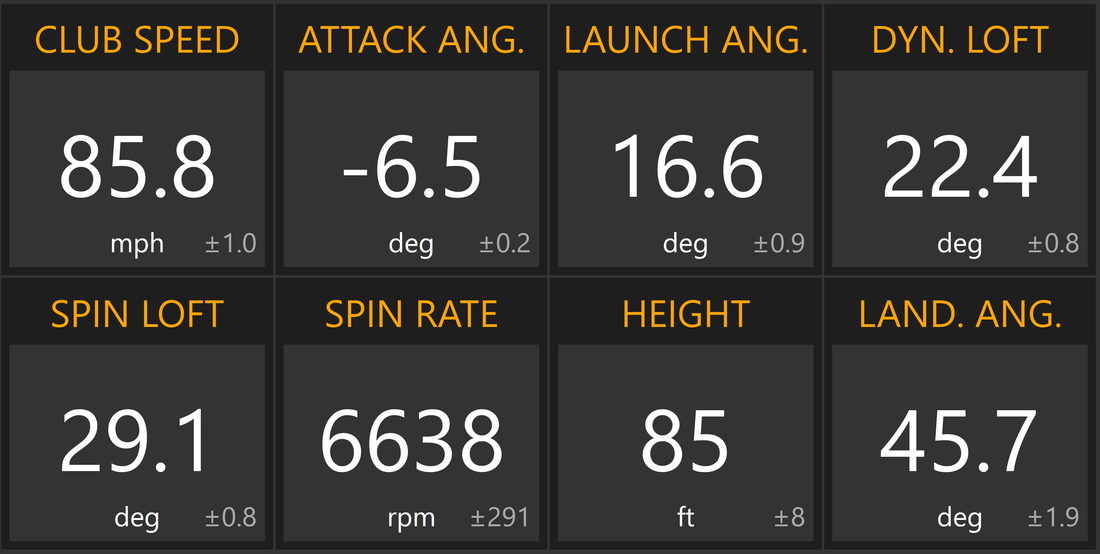
I'm left handed and my club path is -4.8? does this still mean I'm swinging out to the left? or does it flip and mean I'm coming over the top?
Trackman adjusts for right / left. A negative path is always "out to in" regardless of which side you are hitting from. I wish the would always use "out to in" vs. positive / negative as it makes much more sense. Brian
Negative club path is swinging to the left for a lefty.
This is incorrect. Positive and negative values are flipped for left handed golfers.
Rob, you are correct. Negative value for a lefty would mean the club is swinging to the left. I would know, I'm LH
Brian...Trackman does not switch positive and negative for leftys. Positive is to the right, negative is to the left, regardless of dexterity. See explanation from Trackman site here https://blog.trackmangolf.com/club-path/
I noticed that for swing speed 95-100 it states that you will get essentially the same distance regardless of angle attack? 95 mph -5 and neutral are the same, and 100 mph neutral +5 are the same total distance? Is that a typo?
See below Jack. Brian
Jack - I assume you are talking about the numbers in the chart. I would not look at total distance, look at carry distance. I do think it may be a typo in the Trackman data. More spin + higher launch will result in less roll out. So the total numbers may be off, but the carry numbers (most important) show the proper numbers (steeper attack > more spin + less ball speed = less carry).
Jack, Like most things the answer is... it depends. I assume you are talking about a driver swing speed of 95-100 mph. In that case the attack angle has a major impact on distance, but again it depends on the club you are using and the ball as well as your swing and most importantly impact location. If you are not hitting the center of the club you are not going to get the best results... period. We have so many players who want to hit their driver longer. I look at their numbers and their smash is 1.35... 1.4. For a driver that should be 1.5, if it is not, something is wrong. Side note: You can hit long drivers with a negative attack angle, that is what DJ does, but his equipment is tuned for his specific swing. In general the steeper you are the more spin you impart on the ball and the less compression. Less compression = less ball speed = less distance. So yes, more spin WILL have a negative impact on driver distance generally. Ideally you want to be around 2200 spin give or take depending on a few factors. You can be lower if you are launching it high via a massive positive attack angle (think long drivers / Bryson). Spin creates lift and drag which reduces distance. This probably did not answer your question, but really it is never about one or two factors, it is the combination of factors. However in general you should seek to have a 0 or slightly positive attack angle with driver. Trying to get a crazy positive (4,5,6 degrees or more) is very difficult to do consistently and brings bigger misses into play. However, the number 1 thing is to figure out if you are getting 1.5 smash. If you are not, that is your first mission. Brian
Do you know where one can find optimal numbers for: Dyanmic Loft Spin Loft Attack Angle For irons and wedges.
Owen, I just spent about 30 min hitting balls on Trackman and comparing my numbers to pros to get plenty of information to answer this question, all the time discussing it with our head pro and another former pro who happened to be here. Unfortunately, the answer is that there is no one answer for all players. Your swing properties will help determine what the ideal combination is for you with respect to carry distance, height, etc.. Many say that better players have lower dynamic loft. Why? Shaft lean at impact is a big factor in dynamic loft and most higher handicap players "flip" early and don't have their hands ahead at impact like pros. From Trackman "The standard assumption for dynamic loft comes from the TrackMan Optimizer. For the driver, a club speed of 94 mph, attack angle of 0 degrees, and optimized carry results in a dynamic loft of 15.6 degrees. For a 6-iron, a club speed of 80 mph and mid-trajectory results in a dynamic loft of 22.4 degrees. For a PW, a club speed of 72 mph and mid-trajectory results in a dynamic loft of 36.7 degrees." For me, spin loft is a much more important number. My background is civil engineering. This is critical to understanding the forces involved in a club impacting a ball. If a flat surface impacted the golf ball, there would be maximum compression and zero spin. It would be a "knuckle ball". As you add angle the force creates compression and spin. The more angle, the more spin and less compression. What does that mean? The lower the spin loft the higher the smash factor. The more ball speed (and less spin) for the same amount of club speed. The energy is used to compress and launch the golf ball instead of impart spin. What is ideal? This really depends on several things. I personally have a very unique swing that produces interesting numbers. I have a shallow attack angle, about -3.5* for a 6-iron. By comparison Justin Thomas is at -5.5* and many of the pros that I looked at are steeper though it says that PGA Tour average is -4.1*. My dynamic loft is 21.1* while his is 16.0*. My spin loft was 24.7* and his was 21.5*. Oddly, he had more spin (6400) vs. mine (5700). We both had 1.43 smash factors, so his 99.0 mph club head speed produced 141.4 mph of balls peed vs. my 88.7 producing 127.2. In general I hit a very high low spinning shot and have very high smash factor. So I am using velocity and launch angle to project the ball into the air vs. spin to create height. Spin creates lift (upward force on the ball causing it to go higher) but also creates drag (slowing it down). So if you have elite ball speed (like JT) you can have more spin as the velocity makes up for it. That is why in our comparison shots... even though he lauched it 5* lower than me (which is a lot), our apex was close 106 (me) vs 100 (JT). My carry was 182.6, his 192.6. The point is... there are so many factors that "ideal" for any number on any metric changes based on you, your swing, and your goals. The best way to optimize this... find somewhere you can come in and practice on Trackman. Like ROK Golf!
This article on trackman numbers and what they mean has helped me a great deal. I recently went to a professional club fitter to have my clubs measured but everything he kept telling me made no sense. This article helped me understand what he was trying to convey to me. Thanks
Swing plane I am 5’6” have a Trackman hitting bay, trying to improve my face control to not draw as much. Face Angle averages -1.5-3.3, what is an ideal swing plane with a pitching wedge? Thanks Karl
Swing speed with driver 60 approx why is dynamic loft between 20 to 24! Driver has 11deg loft callaway ladies mavrik
Probably you hit the ball really high on the face of the driver. I would recommend to look at the Y-Offset (height) in your trackman data. Possible solutions include a swallower swing plane, teeing the ball a little bit lower or moving it forward in your stance. Good luck, Cheers, Robert
Leave a Reply.
The rok golf team.
The ROK Golf team brings varied experience and qualifications to the golf industry. Our blog will present ideas for discussions from different perspectives.
July 2019 June 2019 March 2019 January 2019
All Playing Tips TrackMan Virtual Golf
512-856-GOLF | [email protected] | Westlake / Bee cave
Data matters: Inside the PGA Tour-Trackman partnership
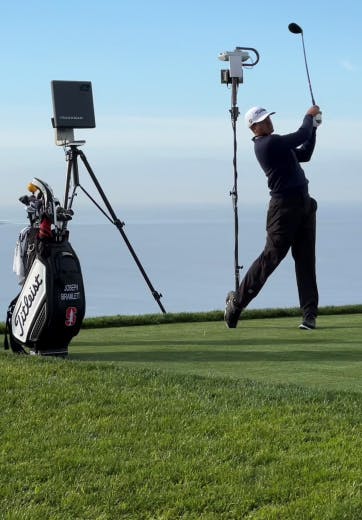
Starting in 2022, the PGA Tour and Trackman joined forces to revolutionize the way we watch and understand the game of golf, bringing fans a more immersive experience than ever before.
With the integration of Trackman's cutting-edge Doppler radar and club and ball tracking technology, nearly every shot during every PGA Tour event is traced and shared across various platforms. This gives golf fans a deeper level of insight into players' performance, detailed club and ball data, and the impact of environmental factors on the game.
Here’s a closer look at how this partnership elevates the way we follow the world's best golfers:
For the Fans
The PGA Tour's decision to expand its partnership with Trackman marks a significant milestone in broadcast golf. By implementing our innovative tracking and tracing solutions, viewers gain unparalleled access to real-time data on club speed, ball speed, curve, landing spin, launch angle, spin rate, apex, carry and more. This data is seamlessly integrated into television broadcasts, OTT platforms and digital channels, offering fans more insight into how and why shots move and arrive at their positions.
Unmatched Tracking
Trackman's advanced aerodynamic models go beyond conventional tracking capabilities. The system can accurately assess the impact of external factors such as wind, weather and altitude on each shot, providing fans with a comprehensive view of how these elements influence the game. Additionally, our tracking system's ability to follow the flight of balls up to 400 yards under various conditions — including rain, fog, sunrise and sunset — ensures that no shot goes unnoticed.
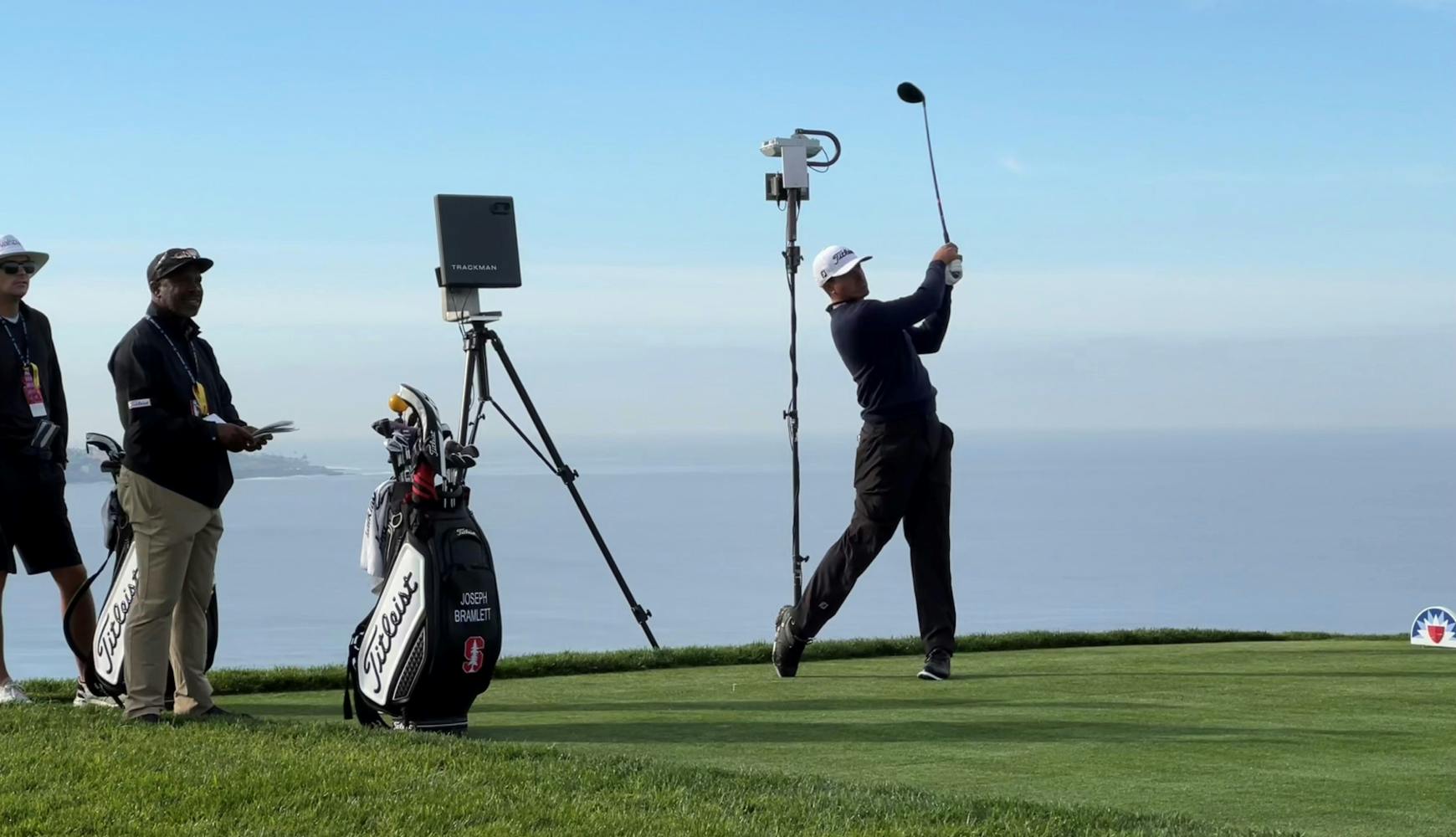
Expanded Capabilities
The partnership between the PGA Tour and Trackman expands the tracking and tracing system from tee boxes to shots hit from the fairway and around the green. This means that every golf shot during a Tour event will be captured and instantly shared with television, OTT and digital partners. This data significantly enriches fan experiences on platforms like TOURCast, where inbound shots to the green can be visualized, offering a unique perspective on the game.
Eyes on the Future
This collaboration is expected to unlock even more innovative ways to present the game of golf. As technology continues to evolve, the fan experience will reach new heights, and the stories of the players' extraordinary skills will be told in captivating ways. The integration of Trackman's mobile system, which requires no cables or connections, is a step toward greater flexibility and efficiency in tracking shots from the fairway. This technology is being tested for future use on other events, including PGA Tour Champions and the Korn Ferry Tour.
- [email protected]
- (843) 321-8935
The Golf Room Blog
Trackman – what is club path.
Prior to recent research, the golf world believed the club face curved the ball and the path created the start line of our shots. However, thanks to Trackman, they found this to be incorrect! In the golfing world, it was like saying the world is round instead of flat.
The new findings have found that the club path actually determines the curvature of our shots whilst club face is a lot more prevalent for the initial starting direction of our shots. As the slogan now goes, “The face starts it, the path bends it”
The actual definition of the club path is “ The in-to-out or out-to-in movement of the club head’s geometric center at the time of maximum compression.”
In other words, club path is normally referred to as being into out swing, known as a positive number for a right handed golfer or out to in which would show as a negative number for the right handed golfer
The holy grail for most amateur golfers is a “draw shot”. To do this we have to create an in to out club path. The optimal club path depends on what ball flight a player likes to see. The higher the club path is relative to zero, the more the ball will potentially curve.
This bodes the discussion for our next blog which ball flight is more efficient for the level of golfer that I am currently and how do I achieve this specific club movement.
Deciding on our intention for the outcome, what we aim to achieve is half the battle of hitting solid golf shots. Once that decision is made, it is much easier to build a golf swing that repeats and produces the shot patterns that we would like to see.
Club path for most golfers is one of the most consistent parts of one swing. However if you come in and your club path is not what you would like it to be, book a lesson with myself or one of our other Golf Room instructors and we would be happy to help you build your ideal club path.
Have a great week and I hope to see you in the Golf Room working on your game
Mitch Farrer – TGR Instructor
Leave a Reply Cancel reply
You must be logged in to post a comment.
IMPROVE YOUR GAME
Train with mgp.
1533 Fording Island Road, Suite 304, Hilton Head Island SC, 29926
Contact MGP
- Search for:
- MGP Partners
- Adult Programming
- Junior Programming
- Online Coaching
- Impact Press Training Iron
- 5 Tour Fundamentals Book
Username or email address *
Password *
Remember me Log in
Lost your password?
Swing Evaluation
Book a swing evaluation to get immediate feedback & personalized training exercises., no thanks, i'm good.

TRACKMAN iO UPDATE! Club Path & Club Speed is Here! Full Review & Demo
You may also like

Trackman PGA Tour Data 2023 – Hit Driver Further Optimizing Backspin!
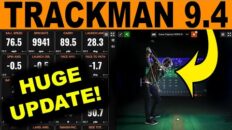
Trackman Golf Simulator – Huge TPS 9.4 Update (First Look & Review)

TRACKMAN iO – Home Vs Complete – Which One Should You Buy? (BIG UPDATES)
Foresight gc3.
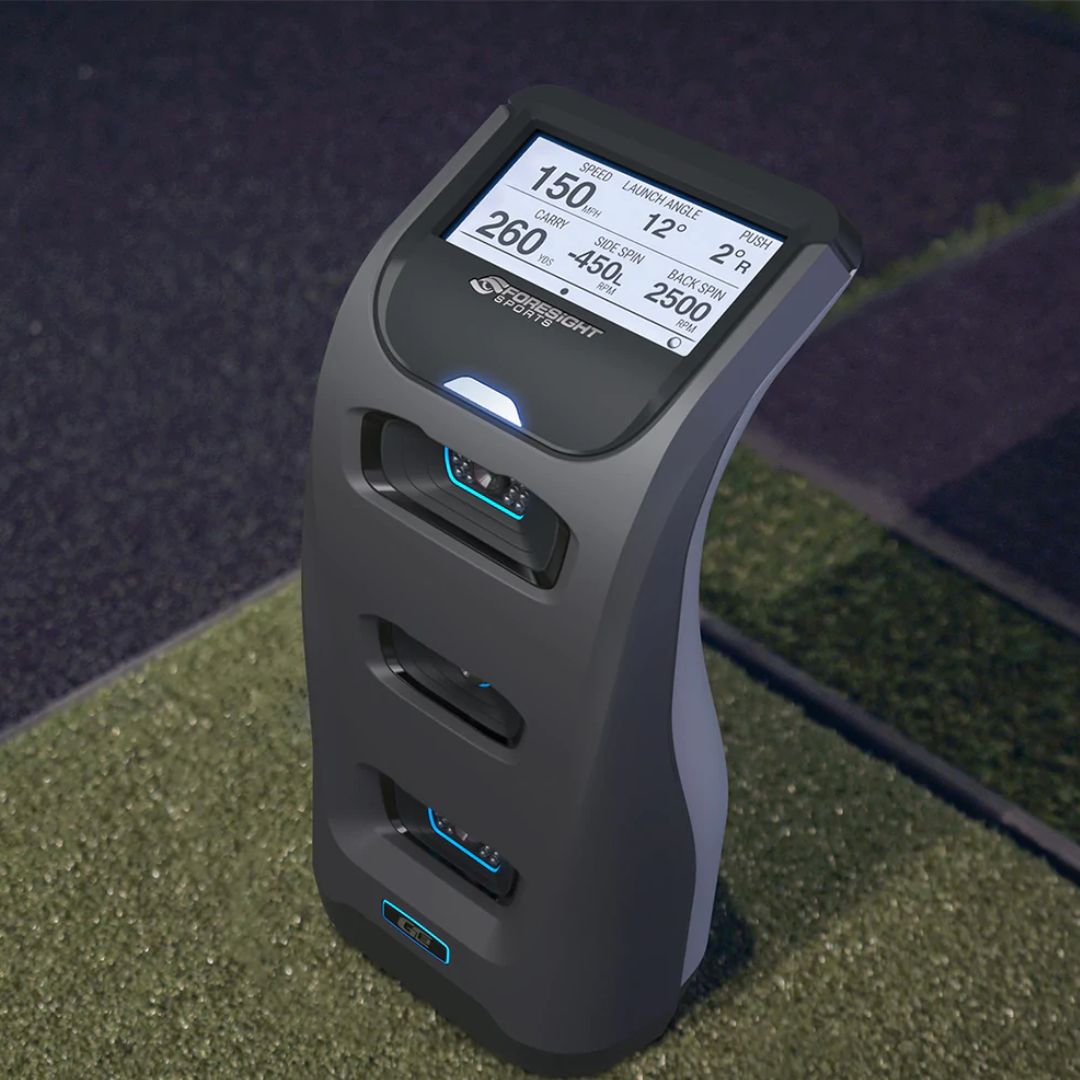
Uneekor Golf Simulator

Flightscope Mevo+

Bushnell Launch Pro
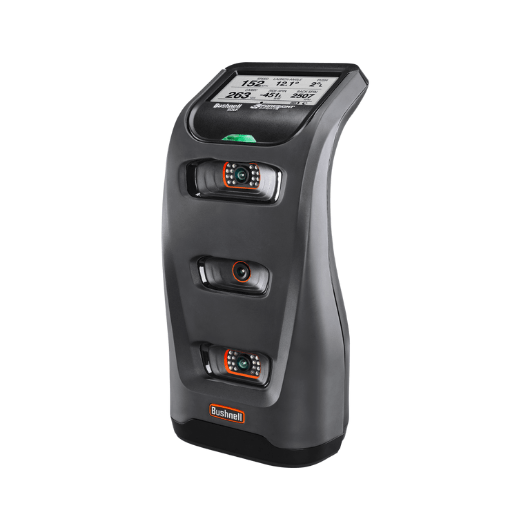
Golf Simulator Projectors
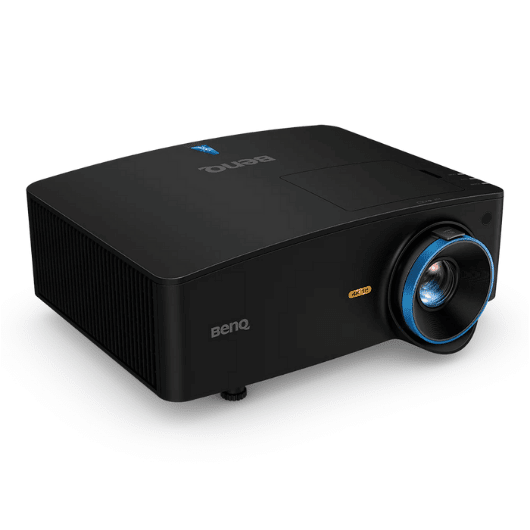

- 425.556.9022
GR GOLF SWAG
- CLUB FITTING
- GIFT CERTIFICATES
- FAIRWAY METALS
- INSTRUCTION
- PRACTICE & PLAY
- CLUB BUILDING & REPAIR
- NO CHARGE FITTING DAYS
- OUR INSTRUCTORS
- OUR PARTNERS
- SAM PUTTLAB
- BOOK A LESSON

INSPIRE - INNOVATE - IMPROVE
The gold standard of launch monitors - trackman 4.
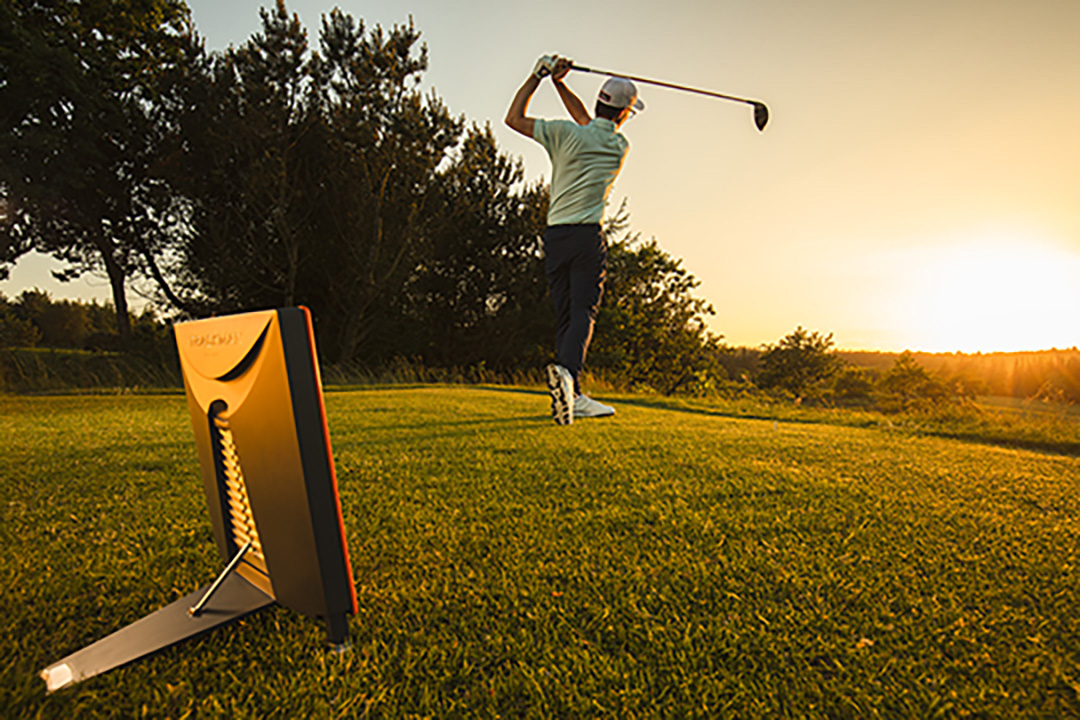
TrackMan utilizes radar technology to precisely track microwaves reflecting from moving golf clubs and balls, capturing critical data at the moment of impact. Established in 2003, TrackMan has a rich history in golf radar technology, aiding professionals in comprehending impact dynamics. Its radar system maps essential parameters such as club speed, ball speed, backspin, launch angle, face direction, swing direction, attack angle, dynamic loft, and more.
This portable golf launch monitor and swing analyzer are indispensable tools in golf instruction today, catering to professionals, coaches, players of all levels, and beginners alike. Whether for swing refinement, analysis, or club fitting, the radar and software adapt seamlessly to both outdoor and indoor simulated golf environments. TrackMan empowers users to grasp how PGA Tour players leverage data in their daily routines.
With unparalleled precision, TrackMan tracks the complete shot trajectory, accurately pinpointing the landing position within a foot at 100 yards. Real-time data, including 3D shot trajectories and 26 impact and ball flight parameters, is delivered within 1 second of impact.
Here are the key club and ball metrics that TrackMan can track for comprehensive analysis:
Face Angle is the direction the club face is pointed (right or left) at impact.
Most golfers refer to this as having an open or closed club face. A positive value means the club face is pointed to the right of the target at impact for a right-handed golfer) and a negative value means the club face is pointed to the left of the target for a right-handed golfer).
SWING DIRECTION
Swing Direction is the direction the club head is moving (right or left) during the bottom half of the swing.
Most golfers relate this number to hitting the ball in-to-out or out-to-in. A positive value means the club is moving to the right of the target at impact (for a right-handed golfer) and a negative value means it is moving to the left of the targetout-to-in (for a right-handed golfer).
ATTACK ANGLE
Attack Angle is the direction the club head is moving (up or down) at impact.
Shots hit off the ground should have a negative attack angle in order to create ball first contact. However, golfers with slower club speeds should be careful not to hit too much down (negative attack angle) with their irons.

DYANMIC LOFT
Dynamic Loft is the amount of loft on the club face at impact.
The golfer’s attack angle, how the shaft bends, how the golfer releases the club head, whether the club face is open or closed to the club path, and where the ball makes contact on the club face can all impact the dynamic loft.
Club Path is the direction the club head is moving (right or left) at impact.
Most golfers relate this number to hitting the ball in-to-out or out-to-in. A positive value means the club is moving to the right of the target at impact (in-to-out for a right-handed golfer) and a negative value means it is moving to the left of the target ( for a right-handed golfer).
VERTICAL SWING PLANE
Vertical Swing Plane is a measurement of how vertical the swing is.
More technically it is the angle made between the ground and the plane of club head trajectory at the bottom of the swing arc. A high value represents a very up and down (steep) swing plane and a low value represents a relatively flat (to the ground plane.
FACE TO PATH
Face to Path is the difference between face angle and club path.
If the ball is impacted in the center of the club and there is no wind, a negative Face to Path value will result in a draw/hook while a positive Face to Path value will result in a fade/slice.
Spin Rate is how many times the ball rotates per minute when leaving the clubface.
Spin rate is independent of the orientation of the spin axis. The spin rate drops during ball flight, typically 4% for each second of flight.
HEIGHT (Apex)
Height is the apex point of the ball flight.
Height is measured relative to the height of the starting/launch position of the ball
LAUNCH ANGLE
Launch angle is the ball’s initial vertical angle.
The ball’s initial vertical angle is relative to level ground (horizon).
Carry is how far the ball travels in the air.
The number reported is carry flat, meaning how far the ball would carry if the ground were perfectly flat relative to where the ball was launched from.
Total is the sum of carry distance plus calculated bounce and roll.
The calculated bounce and roll model depends on three parameters measured by TrackMan: landing angle, spin rate and landing speed.
The balls initial velocity.
Ball speed is the golf balls initial velocity off the clubface.
The speed of the center of the clubface.
Speed of the center of the clubface at impact (first contact with the ball). The speed of the club can vary as much as 7mph from heel to toe.
SMASH FACTOR
Smash Factor is the ratio “ball speed divided by club speed.”
This ratio of ball speed over club speed describes the efficiency of impact.
Spin Loft is the difference between dynamic loft and angle of attack.
The spin loft is related to the static loft of the club, however shaft flex and hands leading or lagging the club head will alter this. Spin loft in the end determines the amount of spin of the ball.
Spin Axis is the axis the ball spins around.
Spin Axis is the measure of axial tilt. Positive means the axis is tilted to the right (resulting a fade or slice for a right handed golfer) and a negative means the axis is tilted to the left (resulting in a draw or hook for a right handed golfer).
LAUNCH DIRECTION
Launch Direction is the initial direction of the ball relative to the target line.
A positive launch direction means the ball started to the right of the target line, a negative reading means to the left of the target line.
LANDING ANGLE
Landing Angle is the descent angle of the ball.
The Landing Angle is measured to the carry (flat) landing point relative to ground level.
Side is how far off-line the ball lands relative to the target line at the point.
Similar to carry, side is “flat,” meaning how far the ball would land off target if the ground were perfectly flat relative to where the ball was launched from.
Side Total is how far off-line the ball lands relative to the target line after bounce and roll.
Hang Time is the amount of time the ball flies in the air.
Hang Time is the amount of time the ball flies in the air from club impact to landing if the ground were perfectly flat relative to where the ball was launched from.
Information
- Shipping & Returns
- Privacy Policy
- Terms & Conditions
- Order History
- Track Orders
- Address Book
Call us now:
- 2021 130th Ave NE Suite D
- Bellevue, WA 98005
- 1-425-556-9022
- Hours of Operation
- Mon-Fri 8am-7pm
- Sat 8am-5pm, Sun closed
- Or by Appointment Only
Connect With Us
- Follow us on social media for updates about the website and events.

- Section Schedule
- Junior Tour Schedule
- Player's Card
- Find A Coach
- Board of Directors & Officers
- Hall of Fame
- Section Newsletter
- AIM Championships
- Schedule & Information
- Past Champions
- Junior Tour
- Assistants Association
- Youth Programs
- Military/Veterans
- Diversity/Inclusion
- Member Directory
- Salesperson Directory
- Become a Member
- Allied Associations
- Advertise with Us
- CNY PGA Education Information
- Specialized Program Path
- Certified Program Path
- Master Professional Path
- PGA.ORG Login
Tournaments
Stroke play champion stroke play championship, presented by: stuart miller golf sales.
- Jun 3 Mon, Jun 3
- Soaring Eagles GC
- Horseheads, NY
- Leaderboard

- Player Stats
- Course Stats

Current Events
Quick links, contact info.
© 2024 Central New York PGA

- Terms of Service Terms
- Accessibility
- Copyright © 2022 BlueGolf © 2022 BlueGolf
Create New List
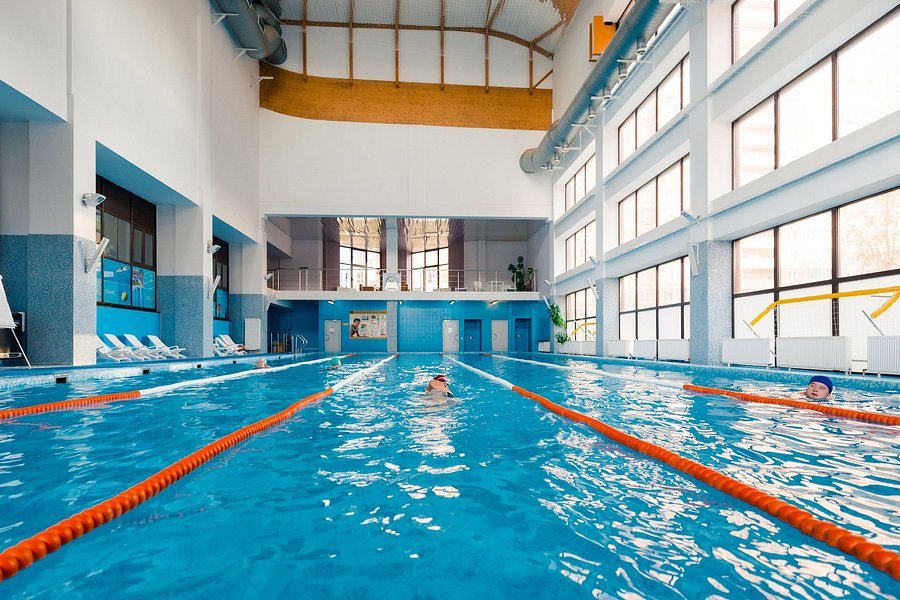
Most Recent: Reviews ordered by most recent publish date in descending order.
Detailed Reviews: Reviews ordered by recency and descriptiveness of user-identified themes such as wait time, length of visit, general tips, and location information.
Pride Club - All You Need to Know BEFORE You Go (2024)
Current time by city
For example, New York
Current time by country
For example, Japan
Time difference
For example, London
For example, Dubai
Coordinates
For example, Hong Kong
For example, Delhi
For example, Sydney
Geographic coordinates of Elektrostal, Moscow Oblast, Russia
City coordinates
Coordinates of Elektrostal in decimal degrees
Coordinates of elektrostal in degrees and decimal minutes, utm coordinates of elektrostal, geographic coordinate systems.
WGS 84 coordinate reference system is the latest revision of the World Geodetic System, which is used in mapping and navigation, including GPS satellite navigation system (the Global Positioning System).
Geographic coordinates (latitude and longitude) define a position on the Earth’s surface. Coordinates are angular units. The canonical form of latitude and longitude representation uses degrees (°), minutes (′), and seconds (″). GPS systems widely use coordinates in degrees and decimal minutes, or in decimal degrees.
Latitude varies from −90° to 90°. The latitude of the Equator is 0°; the latitude of the South Pole is −90°; the latitude of the North Pole is 90°. Positive latitude values correspond to the geographic locations north of the Equator (abbrev. N). Negative latitude values correspond to the geographic locations south of the Equator (abbrev. S).
Longitude is counted from the prime meridian ( IERS Reference Meridian for WGS 84) and varies from −180° to 180°. Positive longitude values correspond to the geographic locations east of the prime meridian (abbrev. E). Negative longitude values correspond to the geographic locations west of the prime meridian (abbrev. W).
UTM or Universal Transverse Mercator coordinate system divides the Earth’s surface into 60 longitudinal zones. The coordinates of a location within each zone are defined as a planar coordinate pair related to the intersection of the equator and the zone’s central meridian, and measured in meters.
Elevation above sea level is a measure of a geographic location’s height. We are using the global digital elevation model GTOPO30 .
Elektrostal , Moscow Oblast, Russia

Follow Playing Through online:
- Follow Playing Through on Twitter
- Follow Playing Through on Instagram
- Follow Playing Through on Facebook
Site search
- Champions Tour
- DP World Tour
- Latest News
Filed under:
Rory McIlroy drops truth bomb related to previous PGA Tour, LIV Golf stance
Ahead of this week’s RBC Canadian Open, Rory McIlroy spoke about his prior commitment to the PGA Tour amid the LIV Golf saga.
Share this story
- Share this on Facebook
- Share this on Twitter
- Share this on Reddit
- Share All sharing options
Share All sharing options for: Rory McIlroy drops truth bomb related to previous PGA Tour, LIV Golf stance
/cdn.vox-cdn.com/uploads/chorus_image/image/73375748/2153260504.0.jpg)
This week’s RBC Canadian Open represents a full-circle moment for the PGA Tour.
Last year, on Jun. 6, 2023, PGA Tour Commissioner Jay Monahan and Saudi Public Investment Fund (PIF) Governor Yasir al-Rumayyan shockingly announced that they had struck a framework agreement, signaling an end to the divide between LIV Golf and the tour.
That bombshell announcement came on the Tuesday before the 2023 RBC Canadian Open, stunning players to their core.
The following day, Rory McIlroy , the defending champion at the time, admitted to feeling like a “sacrificial lamb.” For more than a year, McIlroy supported the PGA Tour’s cause while disparaging everything about LIV Golf. He even admitted to ‘hating’ LIV. But tour brass went behind his back—and everyone else's—and struck a deal with LIV’s beneficiary, the PIF.
Fast-forward to Wednesday, 51 weeks after that jaw-dropping development, and McIlroy reflected upon his prior commitment to the tour.
“I think, in hindsight, I wish I hadn’t gotten involved,” McIlroy revealed Wednesday.
“My whole thing is I’m just disappointed to what it’s done to, not to the game of golf, the game of golf will be fine, but men’s professional golf and this sort of divide we have at the minute.”
The game remains split, as the PGA Tour and the PIF have yet to strike a formal agreement. Perhaps they never will, but either way, multiple major champions compete on different tours, depriving the product on both sides.
:no_upscale()/cdn.vox-cdn.com/uploads/chorus_asset/file/25468981/1497701240.jpg)
Knowing this, McIlroy, who wants to compete on a global tour with every top player, has changed his stance on LIV Golf in previous months.
He echoed those sentiments again Wednesday.
“I’ve said that I certainly hold no grudge; I hold no resentment over the guys that chose to go and play on LIV,” McIlroy added.
“Everyone’s got their own decisions to make, and everyone has the right to make those decisions.”
The best players in the world compete side-by-side only four times per year at each of the major championships.
Look no further than this year’s PGA Championship , which produced plenty of memorable fireworks, with LIV Golf’s Bryson DeChambeau providing tons of energy and drama. Fans seemed to embrace DeChambeau more than ever before, too, a stark contrast from when he played on the PGA Tour.
Nevertheless, McIlroy hopes golf fans will see DeChambeau—and other LIV Golfers—compete alongside PGA Tour players more often than the four majors. Many golf fans feel that way, too.
But his admission Wednesday also reveals that McIlroy is truly sick and tired of the divide, the drama, the back-and-forth, and the circus this saga has created.
“Hindsight’s always 20/20, but in hindsight, I wish I hadn’t gotten as deeply involved as I have,” McIlroy reaffirmed.
“Hopefully, we’re on a path to sorting it all out and getting [everyone] to come back together.”
Jack Milko is a golf staff writer for SB Nation’s Playing Through. Be sure to check out @_PlayingThrough for more golf coverage. You can follow him on Twitter @jack_milko as well.
Next Up In Golf
- LIV Golf’s Joaquin Niemann falls short in U.S. Open qualifying, despite strong season
- PGA Tour’s Webb Simpson thrilled, qualifies for U.S. Open after outstanding back nine
- Robert MacIntyre’s emotional Canadian Open interview with his father is why we love golf
- Robert MacIntyre’s interesting choice to skip Memorial Tournament, see family
- Memorial Tournament: Odds, value picks, predictions for Jack Nicklaus’ Signature Event
- Yuka Saso dominates Lancaster’s back 9 to win U.S. Women’s Open, make incredible history
Loading comments...
Sign up for the newsletter sign up for the playing through daily roundup newsletter, thanks for signing up.
Check your inbox for a welcome email.
Oops. Something went wrong. Please enter a valid email and try again.

- Bahasa Indonesia
- Eastern Europe
- Moscow Oblast
Elektrostal
Elektrostal Localisation : Country Russia , Oblast Moscow Oblast . Available Information : Geographical coordinates , Population, Area, Altitude, Weather and Hotel . Nearby cities and villages : Noginsk , Pavlovsky Posad and Staraya Kupavna .
Information
Find all the information of Elektrostal or click on the section of your choice in the left menu.
- Update data
Elektrostal Demography
Information on the people and the population of Elektrostal.
Elektrostal Geography
Geographic Information regarding City of Elektrostal .
Elektrostal Distance
Distance (in kilometers) between Elektrostal and the biggest cities of Russia.
Elektrostal Map
Locate simply the city of Elektrostal through the card, map and satellite image of the city.
Elektrostal Nearby cities and villages
Elektrostal weather.
Weather forecast for the next coming days and current time of Elektrostal.
Elektrostal Sunrise and sunset
Find below the times of sunrise and sunset calculated 7 days to Elektrostal.
Elektrostal Hotel
Our team has selected for you a list of hotel in Elektrostal classified by value for money. Book your hotel room at the best price.
Elektrostal Nearby
Below is a list of activities and point of interest in Elektrostal and its surroundings.
Elektrostal Page

- Information /Russian-Federation--Moscow-Oblast--Elektrostal#info
- Demography /Russian-Federation--Moscow-Oblast--Elektrostal#demo
- Geography /Russian-Federation--Moscow-Oblast--Elektrostal#geo
- Distance /Russian-Federation--Moscow-Oblast--Elektrostal#dist1
- Map /Russian-Federation--Moscow-Oblast--Elektrostal#map
- Nearby cities and villages /Russian-Federation--Moscow-Oblast--Elektrostal#dist2
- Weather /Russian-Federation--Moscow-Oblast--Elektrostal#weather
- Sunrise and sunset /Russian-Federation--Moscow-Oblast--Elektrostal#sun
- Hotel /Russian-Federation--Moscow-Oblast--Elektrostal#hotel
- Nearby /Russian-Federation--Moscow-Oblast--Elektrostal#around
- Page /Russian-Federation--Moscow-Oblast--Elektrostal#page
- Terms of Use
- Copyright © 2024 DB-City - All rights reserved
- Change Ad Consent Do not sell my data
Jon Rahm – TrackMan Numbers
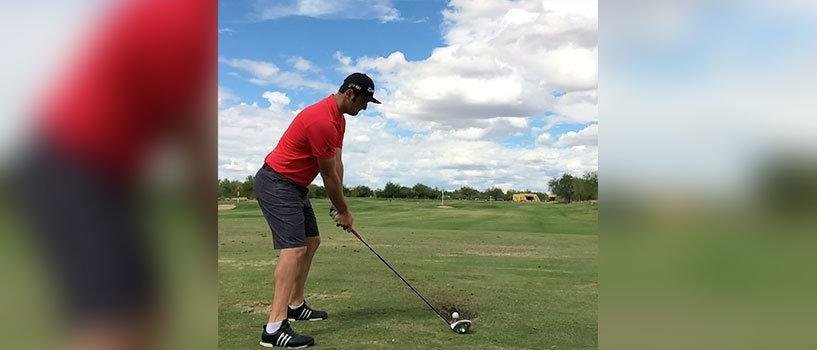
The 22 years old Jon Rahm, is one of the new upcoming stars on the European and PGA Tour. Jon has proven that he is able to compete at the highest level with 2 Top-3 finishes in the 2017 season. Distance is definitely one of his many strengths, have a look at the numbers below.
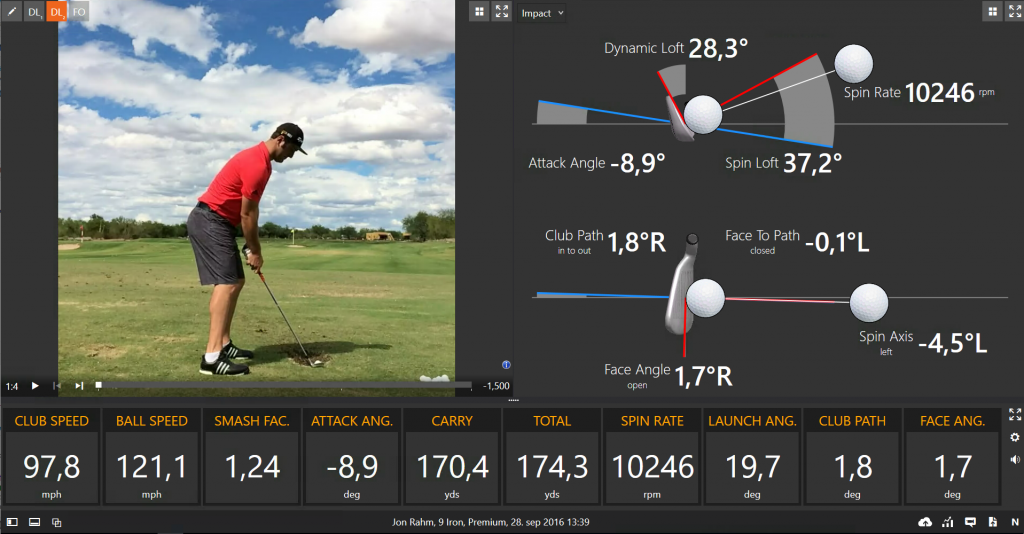
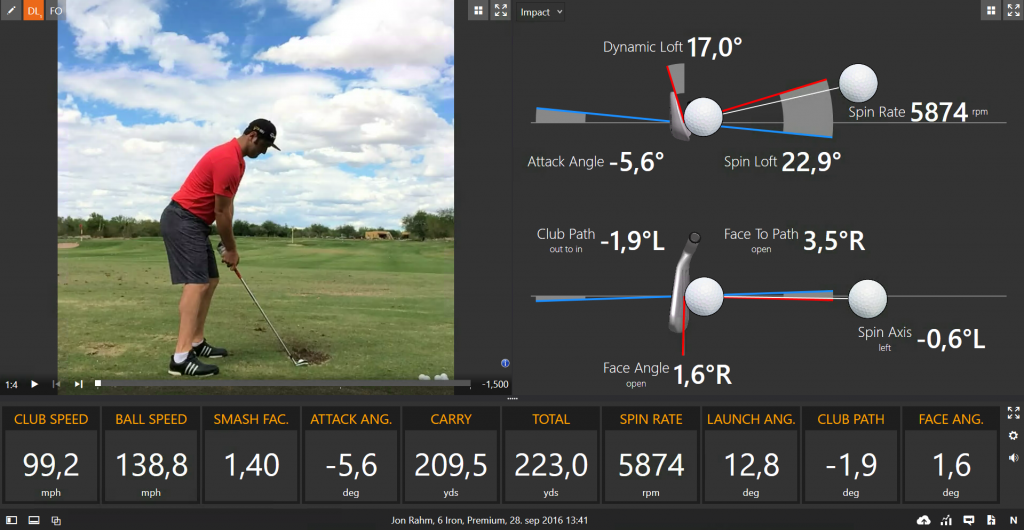
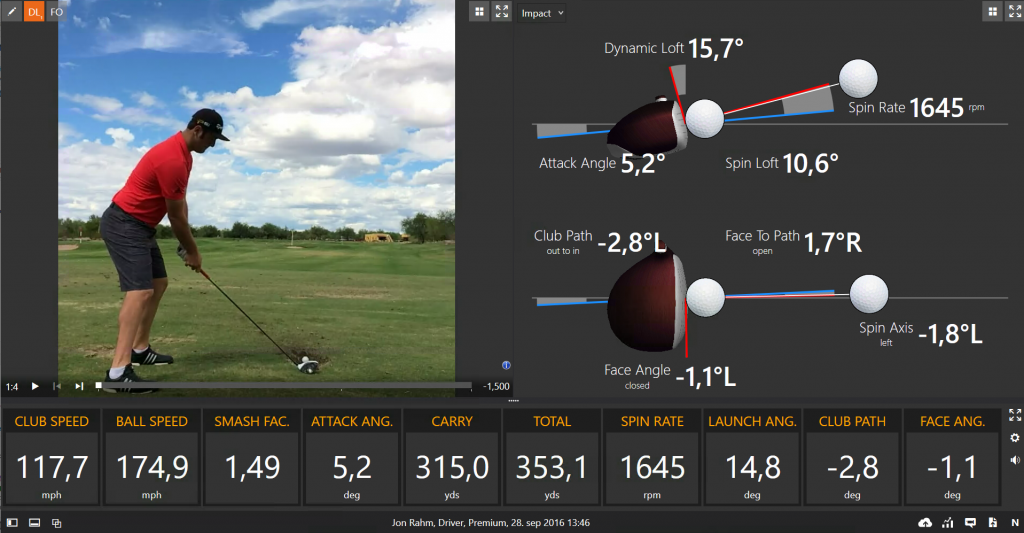
18 comments
The low hands at impact seem to be common to some great players
I am guessing less than 30 degrees loft on his iron with the 6 stamped on it.
@Chris Trunzer He actually plays a 31° 6 iron.
Why is he so steep with the 9 iron?
Downward AOA typically gets it high in the air to make it fall straight down like a marshmallow…
Hi. I am new to the whole trackman stats and i just wanted to understand, why Jons Driver shot is curving to the left (-1.8)? Club Path is out to in -2.8 , Face to path is 1.7 open. Should ´nt it curve to the right? Or is it an off-center stroke (toe-hit) ? Thanks for your reply.
Hi Manuel, You are right, it should have been a fade for him, but it’s almost straight or curving a bit to the left, which means impact is probably slightly towards the toe.
I’d agree but you can freeze frame the video and it actually looks like it’s a slight heel strike (assuming videos are supposed to marry up with the figures)
You don’t know where is the Center of gravity of the club. Maybe it’s not at the center ?
The face is closed in relation to the path. If the face was open 2.8* it would be a straight push. If the face is 2.9 open or more it would start right and fade. Hope this helps
It looks like the face-to-path is -1.1 degree, ie slightly shut producing a tight draw.
can you include swing plane on these
When I ,as a novice, compare numbers on trackman, watch ball strikers on video, in person and the range, it seems that the physical size (mass) of the golfer is a major factor.
Ball flight, or the numbers don’t matter…
Numbers defy common mathematical computation. A club head speed of 117 would at most translate to a distance factor of 2.4, given numbers tabulated by actual drives. Therefore, at 117 mph, carry distance would be 280.8. Actual distance is truly a factor of ball speed, since club head speed doesn’t always translate into the highest ball speed. However, given a factor of 1.64 of distance related to this ball speed of 175, the drive would travel 287. Nothing in measured distances gives a carry distance of 315. Minimum club head speed to carry a driver 300 is @ 125. Carry of 312 requires driver speed of 130.
How does spin factor into your “authoritative” calculations?
Also, Wind, Slope?
Definitely getting ball speed and distance confused. 1.5 is the theoretical limit for efficiency in a driver. 117 x 1.5 is 175.5 mph of ball speed, with 1600 spin, which may actually be a bit too low and a 14 degree launch, This shot is definitely capable of reaching 315 carry.
Leave a Reply Cancel reply
Your email address will not be published. Required fields are marked *
- Coach Of The Month
Recent Comments
- Dylan Maki on TrackMan Average Tour Stats
- Magnus Lundstrøm on Dustin Johnson – 2017 WGC Mexico
- Mark Rippy on Brooks Koepka, winner of the US Open 2017 and 2018
- Pete Player on How The TrackMan Optimizer Works
- Coach of the month
Meet the young pro who approached Tommy Fleetwood for RBC Canadian Open practice round
Matthew anderson leads pga tour americas’ season-long fortinet cup into north america swing.
Change Text Size
ANCASTER, Ontario – Matthew Anderson, a second-year pro from nearby Mississauga, Canada, is not timid.
Five years ago, when he debuted at the RBC Canadian Open as a rising college sophomore, it was a different story.
Anderson has long admired Tommy Fleetwood – the game, the tempo, the class. So when Anderson and Fleetwood crossed paths Monday afternoon near Hamilton Golf and Country Club’s putting green, Anderson went for it: Would Fleetwood be up for a Tuesday practice round? The answer was yes.
Five years ago, Anderson wouldn’t have made this ask, he admitted this week. But success and confidence go hand-in-hand, and Anderson enters this week atop PGA TOUR Americas’ season-long Fortinet Cup standings. He didn’t want to pass up a chance to spend some time with Fleetwood, last year’s RBC Canadian Open runner-up and world No. 13. So he didn’t.
“It’s such a treat,” Anderson said Tuesday at Hamilton, also the site of his debut in 2019. “He hits it so good, and it’s cool asking him some questions. Very cool.
“It’s awesome to have a PGA TOUR start so close to home, and especially my second at the same course. I was so nervous last time; everything was very overwhelming, and five years later, I feel like I belong and I feel like my game is so much more well-rounded and meant to be able to play a golf course like this. It’s so cool to have another opportunity to see what I can do. Go out and have fun and enjoy it.”
Tuesday’s practice round was quite the start. The seasoned veteran Fleetwood and up-and-comer Anderson traversed Hamilton Golf and Country Club’s front nine in the waning daylight, sharing laughs and insights. One such moment came after Anderson’s tee shot at the par-5 fourth – it looked to be cutting right of the fairway, but it landed soft to leave a mid-iron approach that Anderson striped to 6 feet.
As the duo navigated Hamilton’s short par-4 fifth, they discussed Anderson’s career path to this point – after finishing at the University of San Francisco in spring 2023 (as a graduate student), he turned pro and qualified for PGA TOUR Canada. He finished No. 50 on the season-long Fortinet Cup to retain status for the 2024 PGA TOUR Americas’ Latin America Swing, where he thrived with three top-three finishes in six starts including a win. As a top-two finisher on the Latin America Swing, he secures conditional 2025 Korn Ferry Tour status at minimum. (The top 10 on the season-long Fortinet Cup after the North America Swing will earn exempt 2025 Korn Ferry Tour status). This caught the attention of Golf Canada, which offered Anderson a sponsor exemption into this week’s field.
As Anderson explained the process, Fleetwood was curious and engaged. The 15th-year pro has seen the game’s depth increase throughout his career, and Anderson is among this latest generation of fearless young pros who hit the ball a proverbial mile and aren’t fazed by much.
“Really lovely guy,” Fleetwood said. “Got a bright future ahead of him. Hit the ball really, really well. He just looked like he was enjoying it a lot, which I think is really important. It's something that guys forget about at times.
“Happy to have the opportunity to meet someone new and play with him and make a new friend, really, that's just on the same journey as you.”
Anderson also relished the experience; a posed photo on the 249-yard, par-3 sixth tee will serve as a memento for years to come. He waited a couple hours Tuesday for Fleetwood to return from a previously scheduled off-site obligation, and the afternoon was worth the wait, gleaning insights that should serve him well in his promising career – perhaps as soon as this week.
Kevin Prise is an associate editor for the PGA TOUR. He is on a lifelong quest to break 80 on a course that exceeds 6,000 yards and to see the Buffalo Bills win a Super Bowl. Follow Kevin Prise on Twitter .

2024 RBC Canadian Open prop bet picks and PGA Tour predictions
T he PGA Tour is back in Canada this week for the 2024 RBC Canadian Open , which has returned to Hamilton Golf and Country Club for the 1st time since 2019. The 1st round begins on Thursday morning from Hamilton, Ontario.
Below, we search for the best value prop bets from BetMGM Sportsbook among the 2024 RBC Canadian Open odds and make our PGA Tour picks and predictions .
The highest-ranked player in the field this week based on the latest Golfweek/Sagarin rankings is Rory McIlroy , who comes in at No. 3. He was the 2019 champion here and also won the event in 2022 when it was played at St. George's. Tommy Fleetwood is also among the favorites and ranked 14th this week, with 24th-ranked Sahith Theegala also teeing it up.
Hamilton is a short course at just 7,084 yards, and it's a par 70 so there are only 2 par 5s, which limits the scoring opportunities a bit. However, 11 of the 12 par 4s are under 457 yards, so they're certainly on the shorter side, which levels the playing field for longer hitters and those who don't hit it as far.
WATCH: PGA Tour is live on ESPN+! Get ESPN+
RBC Canadian Open – Top-5 picks
Odds provided by BetMGM Sportsbook ; access USA TODAY Sports Scores and Sports Betting Odds hub for a full list. Lines last updated Wednesday at 9:48 a.m. ET.
Cameron Young (+450)
Young has the length off the tee to turn this into an even shorter course, much like McIlroy did in 2019 when he won. Young, of course, is still looking for his 1st PGA Tour victory and while there's a chance it could happen this week, it's safer to bet on another close call at +450 for a top-5.
Shane Lowry (+400)
Lowry finished 2nd here in 2019 when McIlroy ran away from the field by 7 shots, and he comes into the week in good form after finishing T-6 at the PGA Championship. He could keep that up at a course he's familiar with this week.
RBC Canadian Open – Top-10 picks
Sahith theegala (+188).
Theegala has the creativity and soft touch around the greens to scramble for par when he does miss with an approach, which will come in handy this week. He finished 12th at the PGA Championship in his last start after a disappointing final round of 73.
Corey Conners (+225)
Could Conners follow Nick Taylor's path and win on home soil in Canada? He has the ball striking to get it done on this accuracy-driven course, but he'll need the putter to show up because he ranks 163rd in SG: putting.
RBC Canadian Open – Top-20 picks
Alex noren (+100).
Noren has finished in the top 25 in 8 straight starts, a remarkable trend that he should be able to maintain this week on a course that fits his game well. He's short, but accurate, off the tee and a decent putter with an excellent short game around the greens (5th on tour)
Adam Hadwin (+188)
Hadwin has played the RBC Canadian Open 12 times and come in the top 10 in 3 of those starts, so he's very familiar with this tournament – even if it's not contested at the same course every year.
Matt Kuchar (+320)
Kuchar is more of a long shot considering he's missed 9 cuts already this season, but he finished 4th at this venue in 2019 so maybe he can rekindle some of that magic and notch another top 20 this week.
RBC Canadian Open – Matchups
Suggested play is golfer in bold .
Tom Kim (-105) vs. Sam Burns (-120)
Kim's game has been all sorts of off this season, ranking outside the top 100 in SG: off the tee, approach and putting. However, he's begun to turn things around with back-to-back top-26 finishes in his last 2 starts at the PGA Championship and Charles Schwab Challenge.
RBC Canadian Open – Top English
Tommy fleetwood (+120).
Aaron Rai (+250) and Matt Wallace (+450) are the next-closest players to Fleetwood in this category, but Fleetwood still feels like a good value with his ball striking and accuracy off the tee.
RBC Canadian Open – Top Scottish
Robert macintyre (-155).
MacIntyre already has 3 top-10s this season and his only competition in this market is Martin Laird at +125. MacIntyre's ceiling is much higher than Laird's so we'll lay the juice at -155.
RBC Canadian Open – First-round leader
Alex noren (+3300, +320 for top 10).
Noren is becoming almost an auto-bet for 1st-round success in some form, whether it's the outright leader or to be in the top 10 after Round 1. He's 2nd in Round 1 scoring average behind only Scottie Scheffler and has shot 70 or better in 4 straight opening rounds.
Shane Lowry (+3300)
Lowry came in 2nd here in 2019 and is 13th in Round 1 scoring average this season. And he's someone who can get red hot on the course if his putter gets going.
Play our free daily Pick’em Challenge and win! Play now !
For more sports betting picks and tips , check out SportsbookWire.com and BetFTW .
- Upsets galore, all four lower seeds advance to NCAA Men's Golf Championship semifinals
- Auburn's Jackson Koivun captures 2024 Haskins Award, given to men's college Player of the Year
Follow @camdasilva on Twitter/X . Follow SportsbookWire on Twitter/X and like us on Facebook .
This article originally appeared on USA Today Sportsbookwire: 2024 RBC Canadian Open prop bet picks and PGA Tour predictions


IMAGES
COMMENTS
Read what our TrackMan University Masters say about Face to Path… [one_third] John Parkinson Donau Golf Club, Germany "For elite players who consistently drive the ball 300 yards plus, a maximum of 1 degree face to path difference is essential for consistent, accurate drives, given that a typical PGA TOUR fairway is only 30-32 yards wide.
Club Path is the direction the club head is moving (right or left) at impact and is measured relative to the target line. Most golfers relate this number to hitting the ball "in-to-out" or "out-to-in". A positive value means the club is moving to the right of the target at impact ("in-to-out" for a right-handed golfer) and a ...
TrackMan PGA Tour Average stats including Club speed, Attack Angle, Ball Speed, Smash Factor, Launch Angle, Spin Rate, Max Height, Land Angle and Carry. ... Is there any data on typical club path for a tour pro? Reply. Scott Pickett April 5, 2016 at 2:25 pm Can you please post stats for average path, club face, and face to path numbers for PGA ...
Official stat holes are picked going in opposite directions to reduce any effects from wind. Explore the latest PGA Tour Averages from Trackman, featuring Club Speed, Ball Speed, Attack Angle, Spin Rate, Carry, and more. We're committed to delivering the most accurate and up-to-date data, ensuring you're always at the top of your game.
I watched a bunch of youtube, searched the forums and didn't find any actual number except for one post mentioning a generally functional swing path should be in the +/- 3-6 degrees with the face to path being the opposite and halved both for fade and draw. e.g. if you have a +5 path you would want the ftp to be -2,5ish as a general rule.
Watch Darren May and PGA TOUR pro Kevin Streelman show how to change your club path in this TrackMan University video. Part of TrackMan's 10 Fundamentals ser...
For elite golfers, particularly those on the PGA Tour, a Trackman, FlightScope or Foresight unit has become as ubiquitous as golf tees and rangefinders. ... Club path is "the direction the club ...
In this video I show players how to analyze their swing path and club face data. I also provide set up changes that can be made to offset swing path deficien...
PGA Tour players analyze their angle of attack using Trackman to optimize their shots and achieve the desired shot shape for various playing conditions. 8. Club Path. The club path refers to the direction the clubhead moves during the swing. Understanding the club path is crucial for shot accuracy and controlling the shape of the ball's flight.
Club path is simply the path on which the club is coming into the ball that influence curvature you can get on the shot. A positive number means you have hit a shot in to out which typically gives you a draw shape. An out-to-in shot club path would be a negative number and typically sees you hit a fade or a slice. Getting across the line?
TrackMan's term for this is Smash Factor. Smash Factor is a player's ball speed divided by club head speed. The range here for solidly hit golf balls will vary from the low 1.2's in your wedges up to 1.5 for the driver. The main way to maximize your ball speed is to squarely hit the golf ball in the center of the club face.
May 14, 2024. Starting in 2022, the PGA Tour and Trackman joined forces to revolutionize the way we watch and understand the game of golf, bringing fans a more immersive experience than ever before. With the integration of Trackman's cutting-edge Doppler radar and club and ball tracking technology, nearly every shot during every PGA Tour event ...
The introduction of Trackman changed the golf industry on a number of levels. One of the most groundbreaking discoveries, which changed how teachers coach the game, is measured by a term known as club path. Prior to recent research, the golf world believed the club face curved the ball and the path created the start line of our shots.
This latest update from Trackman Golf includes powerful data points for the all-new Trackman iO Home Golf Simulator setup. These data points include Club Speed, Smash Factor, Club Path, and Face to Path. Watch our in-depth review discussing these updates and giving you a full demonstration of the Trackman iO data in action.
TrackMan empowers users to grasp how PGA Tour players leverage data in their daily routines. With unparalleled precision, TrackMan tracks the complete shot trajectory, accurately pinpointing the landing position within a foot at 100 yards. ... CLUB PATH. Club Path is the direction the club head is moving (right or left) at impact.
Change Text Size. Real-time Trackman data is now available to all PGA TOUR players during tournament practice rounds. Beginning each Tuesday around noon through the end of the day Wednesday ...
Trackman Range Technology on the PGA Tour Courtesy of the "On The Range" broadcast show from the RBC Heritage this week on the PGA Tour, Trackman Range Technology is on full display. It is the same...
The arrangement with TrackMan begins in 2022 for PGA TOUR LIVE and TOUR digital platforms, while the domestic television partner agreement begins in 2023. This expansion will immediately offer fan ...
Jun 3, 2024 at Soaring Eagles Golf Club
Understanding Club Path and Club face. Hall of fame golf instructor, Jim McLean uses TrackMan to demonstrate a drill to overcome an excessive inside-out swing path. This golf tip comes from Jim McLean's new book for improving your golf swing with Trackman called, The Ultimate Guide to Trackman Swing Analysis. With co-author Adam Kolloff ...
Skip to main content. Review. Trips Alerts Sign in
Geographic coordinates of Elektrostal, Moscow Oblast, Russia in WGS 84 coordinate system which is a standard in cartography, geodesy, and navigation, including Global Positioning System (GPS). Latitude of Elektrostal, longitude of Elektrostal, elevation above sea level of Elektrostal.
McIlroy, who had been the public face for the PGA Tour in the skirmish with LIV, is back for the fourth straight time north of the border and at Hamilton Golf Club, where he won the first of his ...
Policy board members such as Tiger Woods, Patrick Cantlay and Jordan Spieth prefer to keep PIF at bay, and move forward with a PGA Tour largely backed by private equity. Earlier this year, the PGA ...
Ahead of this week's RBC Canadian Open, Rory McIlroy spoke about his prior commitment to the PGA Tour amid the LIV Golf saga. By Jack Milko May 29, 2024, 10:14am EDT / new
FILE -Grayson Murray celebrates winning the Sony Open golf event, Sunday, Jan. 14, 2024, at Waialae Country Club in Honolulu. Two-time PGA Tour winner Grayson Murray died Saturday morning, May 25 ...
Elektrostal Geography. Geographic Information regarding City of Elektrostal. Elektrostal Geographical coordinates. Latitude: 55.8, Longitude: 38.45. 55° 48′ 0″ North, 38° 27′ 0″ East. Elektrostal Area. 4,951 hectares. 49.51 km² (19.12 sq mi) Elektrostal Altitude.
The 22 years old Jon Rahm, is one of the new upcoming stars on the European and PGA Tour. ... Club Path is out to in -2.8 , Face to path is 1.7 open. ... compare numbers on trackman, watch ball strikers on video, in person and the range, it seems that the physical size (mass) of the golfer is a major factor. ...
He finished No. 50 on the season-long Fortinet Cup to retain status for the 2024 PGA TOUR Americas' Latin America Swing, where he thrived with three top-three finishes in six starts including a win.
The PGA Tour is back in Canada this week for the 2024 RBC Canadian Open, which has returned to Hamilton Golf and Country Club for the 1st time since 2019. The 1st round begins on Thursday morning ...